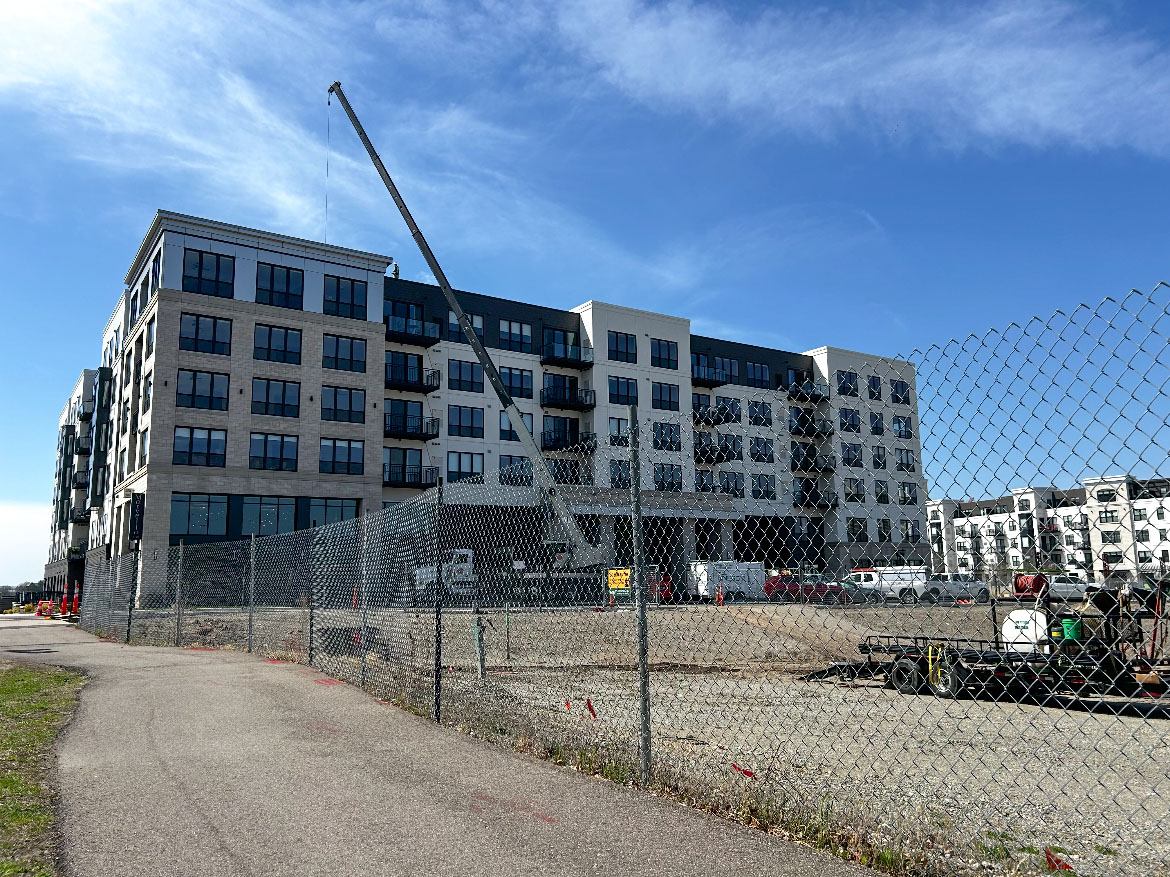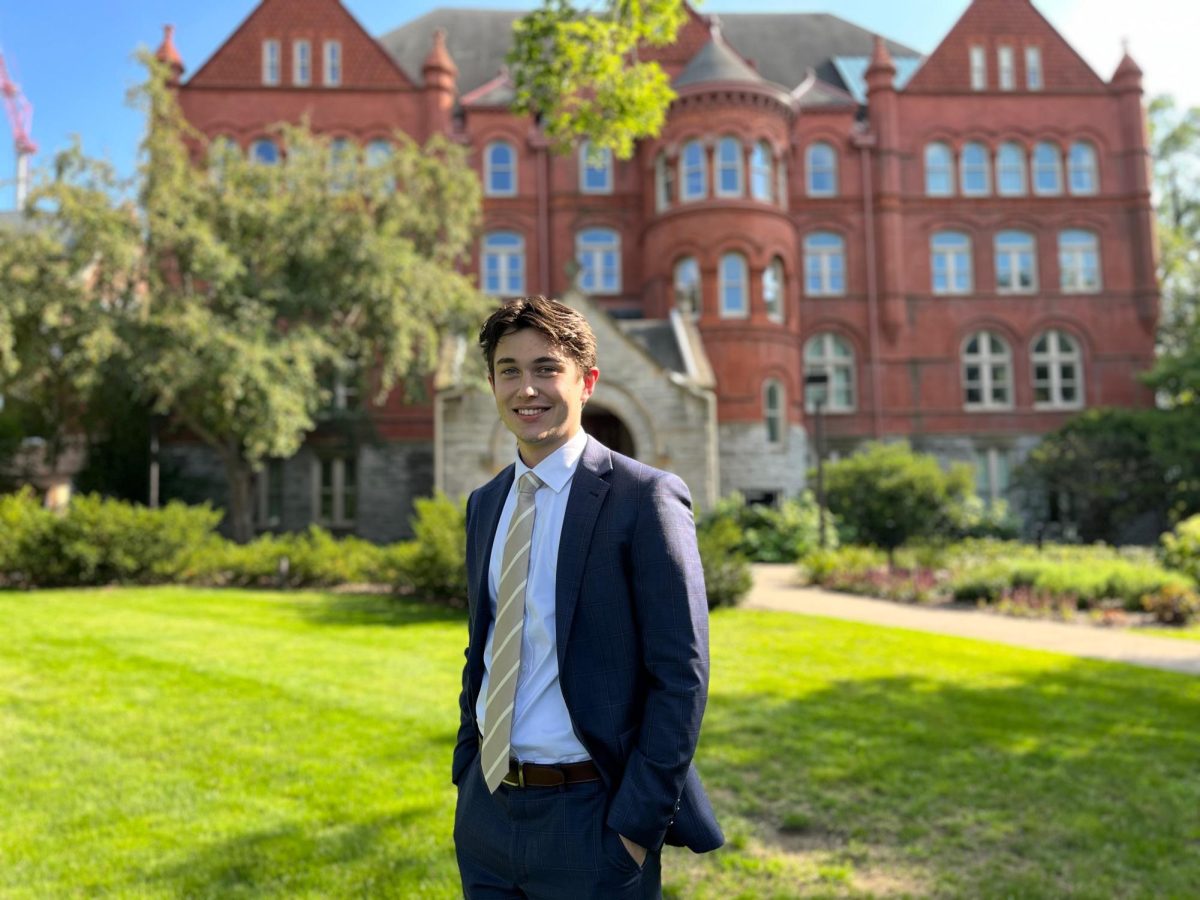As Weyerhaeuser Memorial Chapel is approaching the 50th anniversary of its construction, it may be time for some big changes.
This spring, Macalester is undertaking a feasibility study to determine the future of the building. As part of the study, all members of the Macalester community are invited to attend focus groups on March 5 to share feedback on the space with architects from the firm Bentz Thompson Rietow.
Weyerhaeuser Chapel, which houses a sanctuary space on the main floor and the Center for Religious and Spiritual Life (CRSL) in the basement, is one of the few older buildings on campus that has not undergone major renovations in recent years.
College Chaplain and Associate Dean Reverend Kelly Stone announced the focus groups in The Mac Daily, inviting “diverse stakeholders” to share their opinions on the “structural challenges that limit the functionality and accessibility of the space.”
“For many years, there’s been conversation between each department about the ways in which our building isn’t always meeting the needs of our community,” Stone told The Mac Weekly.
One of the main issues that the feasibility study seeks to explore is compliance with the standards of the Americans with Disabilities Act (ADA). The specific code that the chapel must adhere to is the Americans with Disabilities Act Accessibility Guidelines (ADAAG).
Since the Chapel has not been renovated since the ADA was enacted in 1990, it still fails to meet certain standards of accessibility.
According to Director of Disability Services Melissa Fletcher, achieving ADAAG compliance would require a thorough examination process.
“What is the slope to get up to the chapel? Could someone in a wheelchair really access that themselves? At this point, the answer to that is maybe, or they might need some assistance for doing that,” she said.
“Once they get into the chapel, where are the bathrooms located? What does seating look like, is there wheelchair accessible seating in there? Are there wide paths of travel?” she asked. “Do we need to put in an elevator to get people down to the lower level? Is there a different way to do that? Can we have two entrances?”
As a private college, Macalester falls into the category of a Title III institution, which is not held to as strict of a standard as a public college in terms of accessibility. Title III institutions are required to enhance accessibility when “readily achievable,” according to ADAAG standards.
“When you’re looking at a small Title III school like Macalester, first of all, we look at the changes… what’s reasonable, and feasible to do,” Fletcher said. This means answering questions like, “How much do [the alterations] cost?” and, “Are there modifications that we can make in the chapel that don’t require us altering the whole entire building?”
As is often the case with older, non-ADA compliant buildings, Macalester must make an effort to accommodate community members within Weyerhaeuser Chapel until they make improvements. This could entail, for example, making sure assistance up the ramp is available for people in wheelchairs at events like graduation.
The architects are approaching the feasibility study, Fletcher said, by ascertaining what “readily achievable” improvements to the chapel would look like.
“That’s where [the architects] are starting now: figuring out what the space is being used for and then based on that, then where would the doorway go? Or based on what the space is being used for, where would the bathroom go?” she said.
In addition to accessibility issues, the study seeks to identify other areas that need attention in the Chapel.
“[The Chapel] in really good condition for [being 50 years old], but there are some outstanding issues with it,” AVP of Facilities Services Nathan Lief said. “You’ve got systems that are timing out on their lifespans, you’ve got a roof that needs to go in, you’ve got windows that have failed… And so there’s been talk over the years about doing a remodeling project like we’ve done on other buildings.
“However, we don’t have a good grasp on what that actually means… from a cost standpoint, what the scope of the project would need to be, and so on,” he continued. “So [the study] is really about establishing those basic parameters.”
Lief emphasized that the study is the first step of a long process.
“There’s no budget attached to this; there’s no timeline attached to this,” Lief said. “This is really about understanding what this might look like so we can talk about it intelligently and see where it fits in on a long priority list that the college has.”
One of the issues that Stone hopes to address is the limited functionality of the building for hosting events.
“One of the limitations of this building, which has a very large footprint, is that when you’re doing a large event, you can really only do one event in the space at a time because of the restroom access and the flow from upstairs into the lower level. And the lower level room doesn’t have doors for privacy, so that if you’re doing a large event upstairs, you need to expect a large flow of people downstairs,” she said.
Associate Chaplain Rabbi Emma Kippley-Ogman agrees that demand for a multimodal space should be taken into consideration.
“We already made the change this year to have fewer office spaces and one more gathering space for students, and students have been really appreciative of having that space where they can have a private conversation,” Kippley-Ogman said. “It used to be that the only gathering spaces were where everyone could walk through all the time. That change has shown us [that] having multiple multipurpose spaces that can be used in different modalities feels really valuable.”
She also emphasizes the role that the Chapel can play in the wellness of all Macalester community members.
“People already use [the chapel] in a lot of different ways,” Kippley-Ogman said, “like some people just come in and have a chance to watch the snow falling. There are folks who play the piano upstairs… There are people who come to pray or meditate, but sometimes we’ve had different materials out for creating various artistic things, or breathing balls or spaces where you can just be for a minute.”
“One of the epidemics of our time is loneliness,” she continued. “So, how is this a place where communities can gather, and where you can encounter people who you wouldn’t have known to be a part of your community but who are?”
Both Stone and Kippley-Ogman emphasized the importance of students, faculty and staff attending focus groups and providing feedback to the architects. “We’re hearing from staff and faculty who have been here for a number of years, a couple of faculty emeriti are coming to some of the focus groups, and then students who have just been here a semester and for eight semesters,” Stone said. “So we want to hear from a range of people about their perceptions of the building [and] their experience of the building.”
Kippley-Ogman emphasized the importance of hearing from community members who might not feel a strong connection to the CRSL or to the Chapel. “I hope that students would come to the focus groups whether they’re involved or not involved already to be able to tell that story to the architects. What do you need in a space on campus that is meant to be about the fullness of who we are?”
Autumn DeLong ’20, who has worked in the CRSL since her first year, hopes that the study will lead to a space that is more approachable to all students. “I have friends that are not religiously affiliated or practicing or anything who actually felt estranged from the building and felt that they could not enter because they just didn’t know what it was,” DeLong said.
One of the biggest factors that DeLong feels could make the building more welcoming is removing the cross on the roof.
“One of the biggest things for me so far at Macalester has been finding a way to have a more progressive Christian voice on campus,” said DeLong. “As a progressive Catholic, having the cross on the top of the building is a strange thing because I think a lot of progressive Christians identify more with the Macalester values of multiculturalism and internationalism than with this having to be a Christian place.”
The religious landscape at Macalester, which is still technically a Presbyterian college, has changed drastically since construction began on the chapel in the spring of 1967.
According to the Sept. 23, 1966 issue of The Mac Weekly, Harvey M. Rice, who was President of the college at the time, stated that Weyerhaeuser Chapel was to be, “a symbol of the fact that Macalester is a church-oriented and Christian-related college.”
By Stone’s estimate, there are now between nine and 11 active communities of practice based in the CRSL, many of them not affiliated with Christianity.
“I think as students get to know Macalester and make this place their home, people are much more comfortable coming out of this building without the cross being a large deterrent for them,” Stone said. “People find this to be a place where they can come, worship, gather, observe different holidays and rituals.”
Ethan Levin ’20, however, feels that removing the cross is an important step towards promoting inclusivity in the CRSL.
“For me, as a Jewish student, it feels like there’s been a swastika in every single building on campus. It’s really important for me to go somewhere on campus that I feel safe, that I feel like I can be fully Jewish. That space right now is the chapel, and frankly, it’s a bit of a slap in the face when there’s a cross on top,” Levin said. Levin hopes that the focus groups will provide a productive way to prompt this change.
“To see [the cross] physically removed is a feasible change you can see with your eyes as the rest of campus shifts as a whole,” he said.
“And it doesn’t have to happen unamicably,” he continued. “These focus groups are here for a reason, to go and bring this to the table. Maybe it’s something [administration] hadn’t considered… so now with these focus groups, it’s an opportunity to do that peacefully and start a conversation.”
Levin thinks the overarching goal of the study should extend further than redoing office spaces and conference rooms.
“What does religious life in the 21st century mean?” he asked. “What are the needs of students in that space for the next 50 years?”






Saul Davis • Jan 30, 2023 at 3:29 pm
I would like to see a restroom added to the first floor, and an elevator, otherwise, no changes. It’s a wonderful building and very useful.
Jan James • Sep 11, 2019 at 3:56 pm
I’m very happy to read this. This is the kind of manual that needs to be given and not the random misinformation that’s at the other blogs. Appreciate your sharing this greatest doc.
Zoe Robertson • Sep 10, 2019 at 10:10 am
Hi friends, you are sharing your view about web site SEO, I am also new user of web, thus I am also getting more from it. Thanks to all.
Bailey Hoerner • Jul 23, 2019 at 3:41 am
Mass parsite http://bit.ly/2W9CVkn